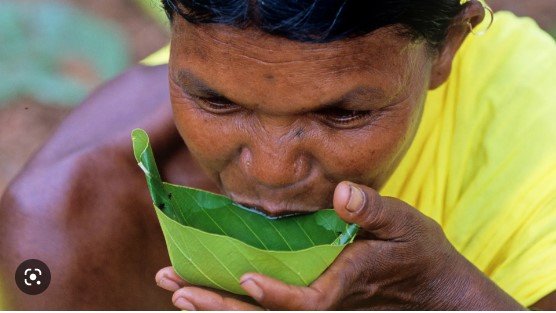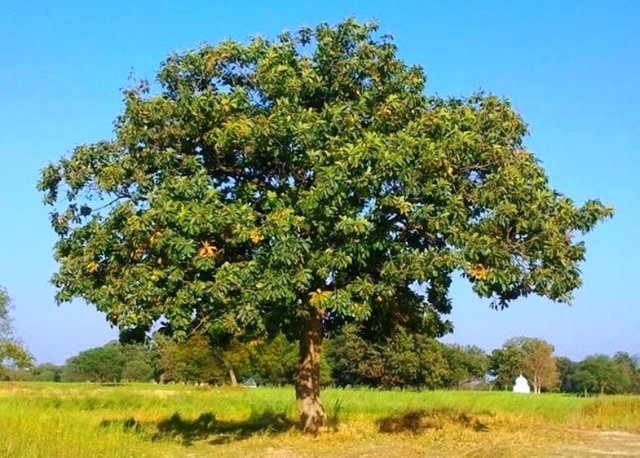The Mahua Tree, scientifically known as Madhuca longifolia, is a species of flowering tree that is native to the Indian subcontinent. It belongs to the family Sapotaceae and is a fast-growing tree that can reach up to 20 meters in height. Mahua is considered as a sacred tree in India and is revered by many communities for its multifarious uses.

The Mahua Tree is a common sight in the forests of central and northwestern India, particularly in the states of Madhya Pradesh, Chhattisgarh, and Maharashtra. It is also found in the eastern part of the country, particularly in the states of West Bengal, Odisha, and Jharkhand. The tree thrives in tropical and subtropical climates and can grow in a wide range of soil types, including sandy, loamy, and clay soils.
The Mahua Tree is a deciduous tree that sheds its leaves during the winter season. The leaves are broad, dark green in color, and elliptical in shape. The tree produces fragrant flowers that are yellowish-white in color and bloom during the months of February to April. The flowers are an important source of nectar for honeybees, which use it to produce Mahua honey.

The Mahua Tree is known for its versatile uses, which range from food, medicine, and fuel to religious ceremonies and rituals. The tree has been a part of Indian culture for centuries and is deeply ingrained in the traditions and customs of many communities.

One of the primary uses of the Mahua Tree is as a source of food. The tree produces an edible fruit, which is also known as Mahua. The fruit is round, about the size of a small apple, and has a hard outer shell. Inside the shell, there is a soft, white pulp that is sweet and juicy. The pulp is used to make a variety of food items, including cakes, sweets, and alcoholic beverages.

Mahua is an important source of nutrition for many communities in India, particularly those living in rural areas. The fruit is rich in carbohydrates, proteins, and minerals, including calcium, phosphorus, and iron. It is also a good source of vitamins, including vitamin C.
In addition to being a source of food, Mahua is also used for medicinal purposes. The tree has been used in Ayurvedic medicine for centuries and is believed to have a range of health benefits. The bark of the tree is used to treat fever and diarrhea, while the flowers are used to treat respiratory problems and skin diseases.

Mahua oil, which is extracted from the seeds of the Mahua fruit, is also used in traditional medicine. The oil is believed to have anti-inflammatory and analgesic properties and is used to treat rheumatism, arthritis, and other joint problems. It is also used as a massage oil and is believed to be beneficial for the skin.
The Mahua Tree is also an important source of fuel. The wood of the tree is dense and burns slowly, making it ideal for cooking and heating purposes. The branches and leaves of the tree are also used as fuel for cooking and for making charcoal.

In addition to its practical uses, the Mahua Tree also has cultural significance in India. The tree is considered sacred by many communities and is associated with various deities and religious traditions. In some regions, the tree is worshipped during festivals and ceremonies.
The Mahua Tree is also an important part of the ecosystem in India. The tree provides habitat and food for a wide range of animals and birds, including monkeys, squirrels, and parrots. The tree also helps to prevent soil erosion and improves the fertility of the soil.
Despite its many uses and cultural significance, the Mahua Tree is facing threats due to deforestation and habitat loss

Hope this information would be knowledgeful....
"Your support will help me to provide more informative content on a regular basis."
Thanks!